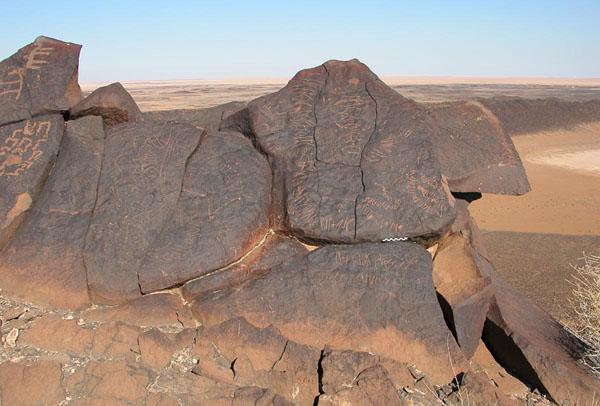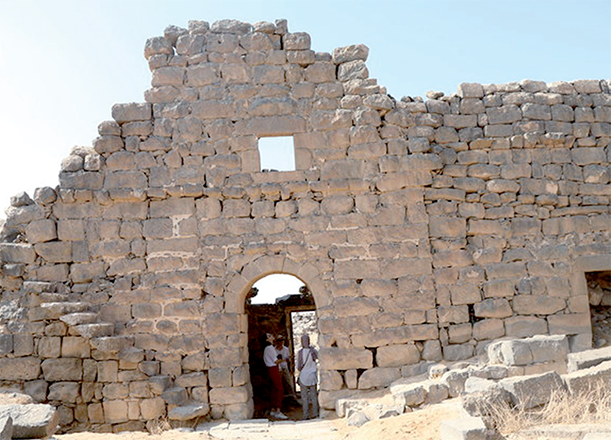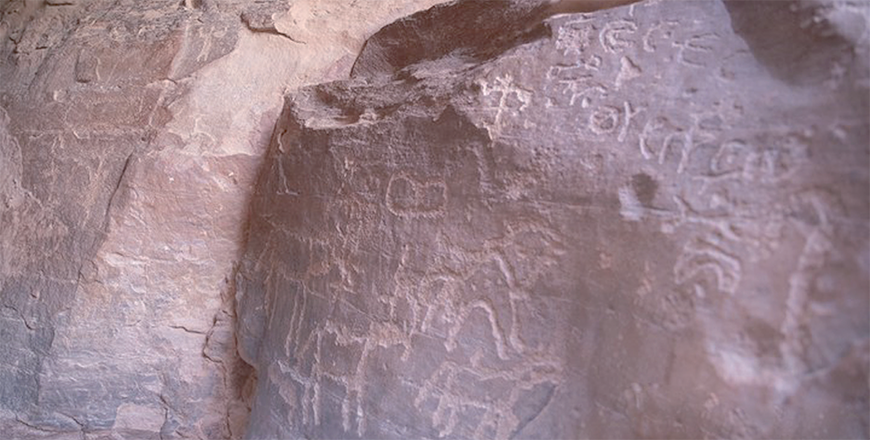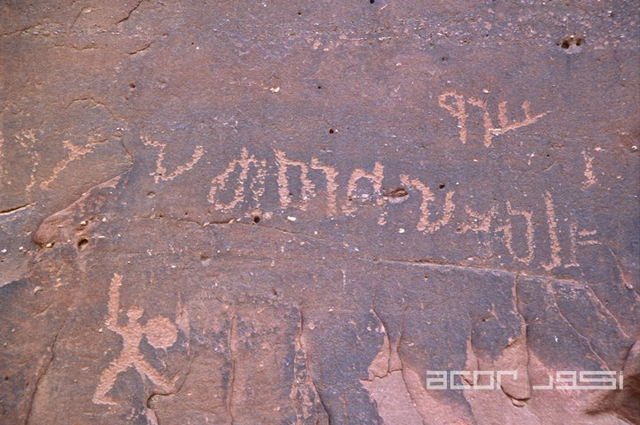You are here
Researcher unearths ‘tweets’ from desert thousands of years ago
By Hind Joucka - Apr 29,2015 - Last updated at Apr 29,2015

AMMAN — The practice of expressing random thoughts in 140 characters or less is not necessarily a product of the 21st century, according to an Oxford scholar, who argues that nomads in the deserts of Jordan pioneered that between the first century BC and the fourth century AD.
Michael Macdonald, a researcher in Oriental studies and archaeology at the University of Oxford, said inscriptions by these nomads on stones in the deserts of what is now Jordan, southern Syria and northern Saudi Arabia are similar to phrases we share on the social networking website Twitter.
Delivering a lecture at the CBRL British Institute in Amman this week, Macdonald likened the way nomads wrote personal statements and information about what they were doing, thinking or feeling to the way modern-day social media users share information on outlets such as Twitter.
Just like on social media, some of the inscriptions were highly personal and at times show the authors’ genuine vulnerability. Some stones have names of people the authors love, people they miss who are far away and people they are grieving, according to the researcher.
However, much like a “tweet” that has gone viral, there is no control over who reads the graffiti on the stone, Macdonald said.
As he revealed at the lecture, there are tens of thousands of inscriptions on the desert rocks. As a result of which, “we have far more information about the way of life of these nomads than we do about any other section of the population at that time.”
Macdonald, who lived in Jordan in the 1970s and 1980s and has been leading surveys to record inscriptions in Jordan, Syria and Saudi Arabia for the last 40 years, said these societies “didn’t depend on literacy and the written form of communication the way we do” and adapted without it by having a highly developed memory, and by circulating information through word of mouth.
“As a result of long periods of idle [solitude], writing became a pastime instead of a necessity. Graffiti was a perfect medium for circumstances of amusement. They wrote whatever they were thinking on the spot with no constraint, and in no specific order,” he said.
Desert nomads generally wrote these messages while on high hilltops, to ensure that they were safe from enemies or to enable them to look after the herd while passing time, according to Macdonald.
Because the only surfaces they had to write on were rocks, these inscriptions were not usually long, he said, due to the manual labour authors had to put into carving their messages into stone.
The writings, therefore, do not give detailed information; just a short description of what was happening or what they were thinking, in the same vein as Twitter, the Oxford faculty member said.
The lecture also covered the various alphabet sets that were used in different locations across the desert, which were not taught at a school but “passed on by one child to another”.
“Until today, culture remains entirely oral and it is very important that it remains that way. For example, poetry needs to remain in oral form,” so that it does not lose its essence, he said.
Related Articles
AMMAN — Decades of research on Safaitic, Latin and Greek graffiti uncover surprising evidence of cultural contact and daily life in the anci
AMMAN — Travelling to the Middle East for the first time in March 1967, the British scholar Michael Macdonald spent five months with a rucks
AMMAN — In order to have centralised information about inscriptions from Ancient North Arabia, a group of scholars created “The Online Corpu
















